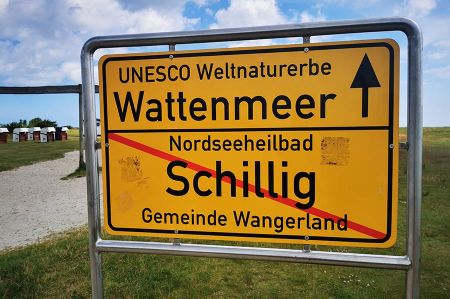2. Mudflat hike to the Minsener Oog bird sanctuary
- Written by Portal Editor
A few years ago, we had already searched for a path through the Wadden Sea to visit the Minsener Oog bird sanctuary. At the time we were with some friends from the south of Germany who wanted to get to know the mudflats for the first time and thus the healthy effect of the mud and the fresh sea breeze (click here for the article from that time).
Our guide at the time was available again and first explained to us that the official name is Minsener Oog because it is derived from the mainland town of Minsen opposite. There is a legend that the town of Minsen used to be on the island of Minsener Oog. The local fishermen are said to have caught a mermaid who, out of revenge, caused the village to sink into the flood. Based on this legend, there is the bronze sculpture of the Minsener Seewiefken in Minsen, which is also the coat of arms figure of the Wangerland municipality.
The legend of the Minsener Seewiefken
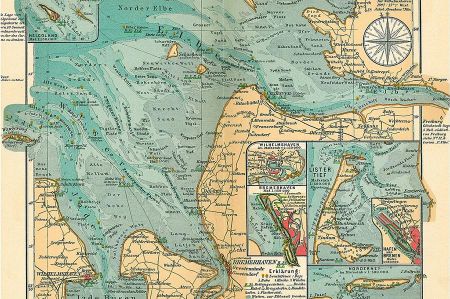 The alleged location of the place in the Wadden Sea is now called Minsener Oog, but popularly still Minsener Oldeoog, because the old parish was supposedly located there. The story tells how fishermen once caught a mermaid (Frisian Seewiefken) in their nets. They brought the mermaid ashore and tormented her greatly because the rumour was going around that sea people knew the secrets of all kinds of panaceas. But the mermaid just said: "Cologne or Dill, I don't know where it's going, and if you're OK with me!"
The alleged location of the place in the Wadden Sea is now called Minsener Oog, but popularly still Minsener Oldeoog, because the old parish was supposedly located there. The story tells how fishermen once caught a mermaid (Frisian Seewiefken) in their nets. They brought the mermaid ashore and tormented her greatly because the rumour was going around that sea people knew the secrets of all kinds of panaceas. But the mermaid just said: "Cologne or Dill, I don't know where it's going, and if you're OK with me!"
At some point the mermaid managed to escape the clutches of her tormentors. She quickly ran towards the water, where she turned around once again and splashed some seawater over the dike with her hands.
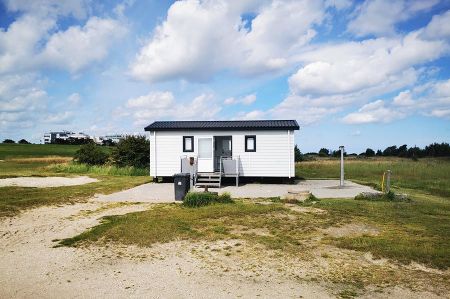 Then she dived under and disappeared. The next day, when the residents were in church, a heavy storm arose, the flood piled up, broke through the dyke and swept the entire village, including its gardens and fields, into the depths. Since then, the old saying has existed in the area: "It ends like Minsen's prayers".
Then she dived under and disappeared. The next day, when the residents were in church, a heavy storm arose, the flood piled up, broke through the dyke and swept the entire village, including its gardens and fields, into the depths. Since then, the old saying has existed in the area: "It ends like Minsen's prayers".
A bronze sculpture is dedicated to this story, which is set up in the Norderaltendeich district near the dyke. The sculptor and painter Karin Mennen from neighbouring Horum created the larger-than-life figure of a mermaid in 1992. Worth a visit, too.
The starting point is once again the beach at Schillig
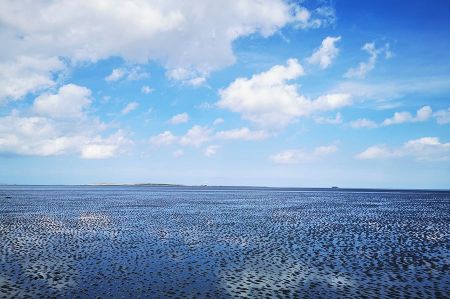 Our starting point is once again the beach at Schillig, from which the guided tours to the bird sanctuary island of Minsener Oog also start. In this context, we would like to expressly point out once again that the tour to Minsener Oog is not entirely safe if you do not know how to correctly estimate the tides and the route. In the first article we had already pointed out the dangers of these 7 kilometres through the Wadden Sea.
Our starting point is once again the beach at Schillig, from which the guided tours to the bird sanctuary island of Minsener Oog also start. In this context, we would like to expressly point out once again that the tour to Minsener Oog is not entirely safe if you do not know how to correctly estimate the tides and the route. In the first article we had already pointed out the dangers of these 7 kilometres through the Wadden Sea.
Today we are far removed from the myths of the past and know that the island of Minsener Oog is man-made and built on two sandbanks. It was created at the beginning of the 20th century from the sandbanks of Minsener Oog and the Olde Oog, which is located 200 to 300 meters south of it, or the sandbank of Steenplate, to protect the shipping lane to the ports of Wilhelmshaven and Bremerhaven. As early as 1906, the Wilhelmshaven Naval Construction Directorate built groynes and dams on Olde Oog to prevent the Jadestrom shipping lane from silting up.
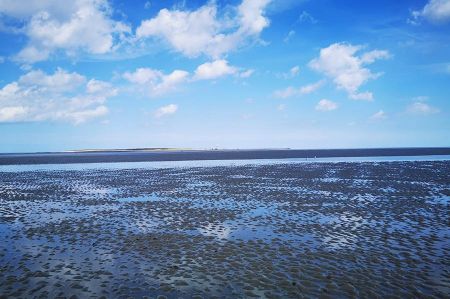 This was to keep the shipping lane to Wilhelmshaven free of sand drifting eastwards, especially for the Imperial Navy fleet. A small dune area was created on the original 7 km² Olde Oog sandbank, just like on Minsener Oog. The construction of long connecting groynes held back the sand and a foredune was formed, which was soon adopted as a breeding ground for seabirds.
This was to keep the shipping lane to Wilhelmshaven free of sand drifting eastwards, especially for the Imperial Navy fleet. A small dune area was created on the original 7 km² Olde Oog sandbank, just like on Minsener Oog. The construction of long connecting groynes held back the sand and a foredune was formed, which was soon adopted as a breeding ground for seabirds.
The original plan was to connect Wangerooge with the Minsener Olde Oog so that Wangerooge's land erosion could come to an end. This project was temporarily resumed in the 1930s, but the war prevented further work of this kind.
Bird sanctuary and tourist attraction
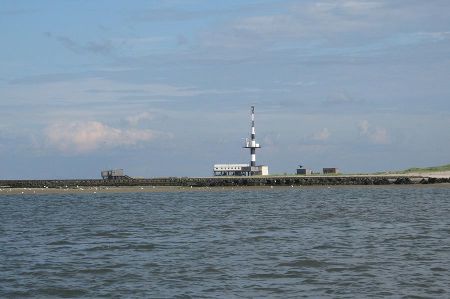 In the 1970s, a new large dune island was created by dredging sand to secure the Jade fairway. Over 10 million m³ of dredged material was dumped from the Jade fairway in 1975 and 1978, thus increasing the size of the southern part of the island. It now has a dune landscape that is up to 12 meters high in places and is around 370 hectares in size. By planting marram grass, the land erosion has now largely been contained. The island is 4.5 kilometres long from north to south and up to 1.5 kilometres wide.
In the 1970s, a new large dune island was created by dredging sand to secure the Jade fairway. Over 10 million m³ of dredged material was dumped from the Jade fairway in 1975 and 1978, thus increasing the size of the southern part of the island. It now has a dune landscape that is up to 12 meters high in places and is around 370 hectares in size. By planting marram grass, the land erosion has now largely been contained. The island is 4.5 kilometres long from north to south and up to 1.5 kilometres wide.
Since the beacon was automated, a bird watcher appointed by the Mellumrat e. V. only lives on the Minsener Oog in the summer months during the breeding season, sharing the residential barracks of the Water and Shipping Authority. The island is also considered one of the most important research areas for the Institute for Bird Research.
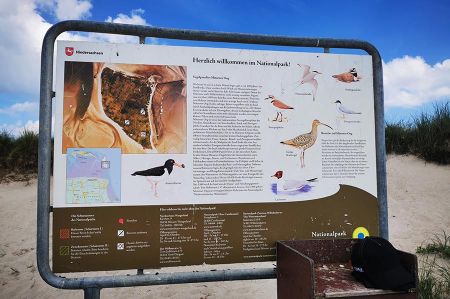 The breeding birds are herring gulls, lesser black-backed gulls, common gulls, common terns, coastal terns, sandwich terns and little terns as well as magpies, carrion crows and barn swallows. Recent counts from 2021 have shown that this artificial island is home to Germany's largest population of sandwich terns with 8,000 pairs.
The breeding birds are herring gulls, lesser black-backed gulls, common gulls, common terns, coastal terns, sandwich terns and little terns as well as magpies, carrion crows and barn swallows. Recent counts from 2021 have shown that this artificial island is home to Germany's largest population of sandwich terns with 8,000 pairs.
In the summer months, mudflat hikes are offered from Schillig on the mainland to the island. However, for nature conservation reasons, only a small part of the island may be entered. The entire island belongs to Quiet Zone I of the Lower Saxony Wadden Sea National Park.
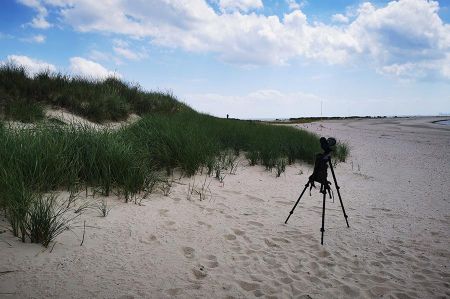 After just an hour we reached the mighty tidal channel in front of the Pricken Weg and noticed that it was so deep that it was impossible to walk through it or even swim through it with luggage. Later, when we spoke to the bird warden, he told us that the mudflats had changed significantly again due to the current conditions, particularly during the last floods.
After just an hour we reached the mighty tidal channel in front of the Pricken Weg and noticed that it was so deep that it was impossible to walk through it or even swim through it with luggage. Later, when we spoke to the bird warden, he told us that the mudflats had changed significantly again due to the current conditions, particularly during the last floods.
Based on the knowledge of our mudflat guide, we decided to cross the path through the Pril further west, which we managed. Even the Pricken Weg/small channel was less deep and could then be crossed easily. Due to the tides, you can only stay on Minsener Oog for a few minutes, because the flood water returns quickly and the tidal channels become deep watercourses, sometimes with strong currents.
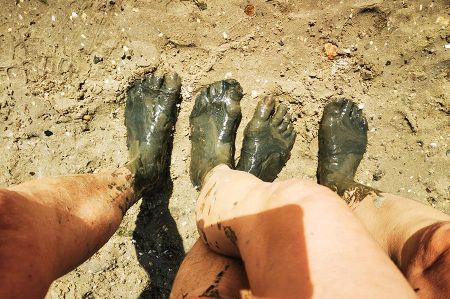 There are only 8 minutes between the lowest point of the low tide and the start of the new high tide. You have to plan this precisely if you want to walk the path to the bird sanctuary island.
There are only 8 minutes between the lowest point of the low tide and the start of the new high tide. You have to plan this precisely if you want to walk the path to the bird sanctuary island.
Please read as well:
Cycle tour to the Burgaltendorf castle ruins from Essen-Horst
Coastal sea rescue - 150 years service to shipwrecked people
